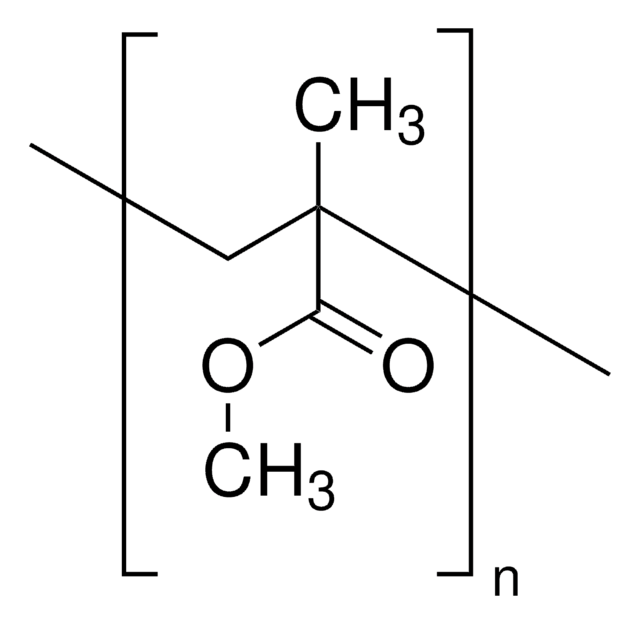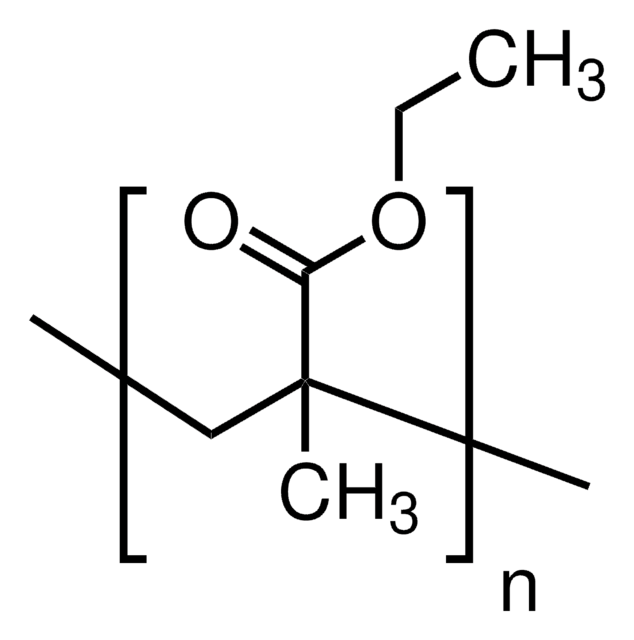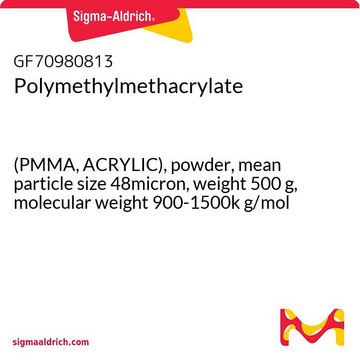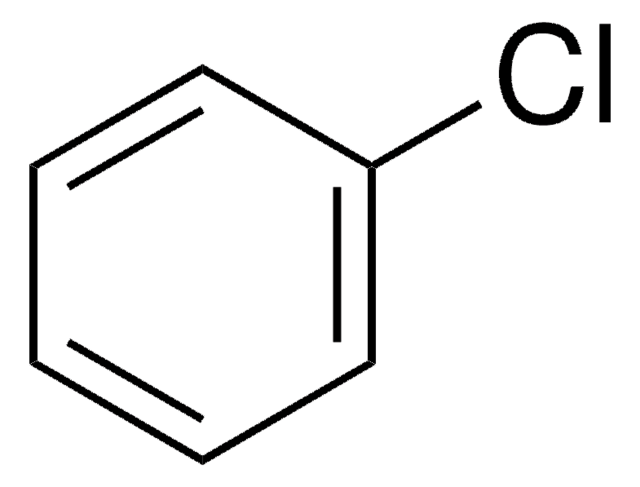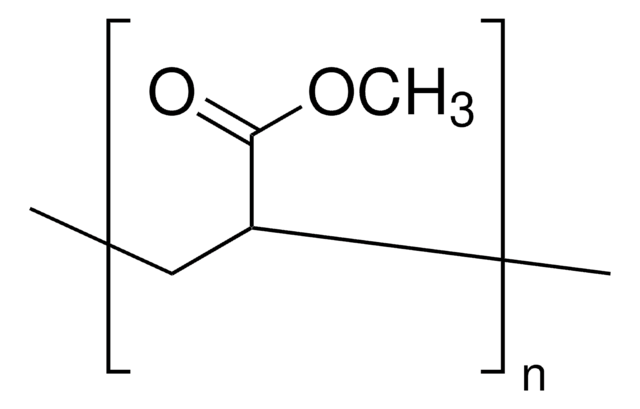About This Item
推荐产品
自燃温度
580 °F
质量水平
杂质
may contain ≤2.0% toluene
折射率
n20/D 1.49
固有粘度
0.20 dL/g(lit.)
转变温度
Tg (DSC) 105 °C (midpoint)
溶解性
H2O: insoluble
密度
1.188 g/mL at 25 °C
InChI
1S/C5H9O2/c1-4(2)5(6)7-3/h1-3H3
InChI key
PMAMJWJDBDSDHV-UHFFFAOYSA-N
正在寻找类似产品? 访问 产品对比指南
一般描述
应用
一些研究报告它用于
PMMA-二氧化钛杂化光学薄膜
PMMA /聚苯乙烯/粘土纳米复合材料
用于甲醇燃料电池的 PMMA /聚氨酯/炭黑纳米复合材料
储存分类代码
11 - Combustible Solids
WGK
WGK 2
个人防护装备
Eyeshields, Gloves, type N95 (US)
从最新的版本中选择一种:
分析证书(COA)
Which document(s) contains shelf-life or expiration date information for a given product?
If available for a given product, the recommended re-test date or the expiration date can be found on the Certificate of Analysis.
How do I get lot-specific information or a Certificate of Analysis?
The lot specific COA document can be found by entering the lot number above under the "Documents" section.
How do I find price and availability?
There are several ways to find pricing and availability for our products. Once you log onto our website, you will find the price and availability displayed on the product detail page. You can contact any of our Customer Sales and Service offices to receive a quote. USA customers: 1-800-325-3010 or view local office numbers.
What is the composition of Product 182230, Poly(methyl methacrylate)?
The composition is approximately 6% isotactic, 39% atactic, and 55% syndiotactic
What is Product 182230, Poly(methyl methacrylate), soluble in?
This product is soluble in benzene, xylene, methylene chloride, chloroform, chlorobenzene, hot cyclohexanol, dioxane, methyl ethyl ketone, acetic acid, and acetone.
What is the polydispersity of Product 182230, Poly(methyl methacrylate)?
The polydispersity is typically between 2.0 and 2.4.
What is the particle size of Product 182230, Poly(methyl methacrylate)?
The particle size is less than 2 mm.
What is the Department of Transportation shipping information for this product?
Transportation information can be found in Section 14 of the product's (M)SDS.To access the shipping information for this material, use the link on the product detail page for the product.
My question is not addressed here, how can I contact Technical Service for assistance?
Ask a Scientist here.
商品
Electrospinning technique applications discussed, emphasizing control of nanofibers and assembly into 3D architectures.
Professor Aran discusses engineering graphene-based materials through careful functionalization, enabling diverse applications.
Self-healing soft electronic materials enable autonomous repair, reducing waste and costs in electronic devices.
我们的科学家团队拥有各种研究领域经验,包括生命科学、材料科学、化学合成、色谱、分析及许多其他领域.
联系技术服务部门